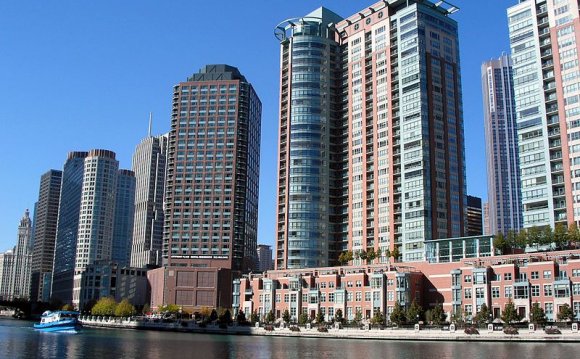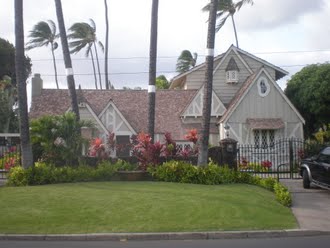
Significant water savings can be achieved indoors and out through improvements in equipment and operational practices. Each building type has particular challenges to face and specific areas where the greatest reductions can be made. Learn more about water use and potential reductions tailored specifically to:
The commercial and institutional sector is the second largest consumer of publicly supplied water in the United States, accounting for 17 percent of the withdrawals from public water supplies. This sector includes a variety of facility types such as hotels, restaurants, office buildings, schools, hospitals, laboratories, and government and military institutions. Each facility type has different water use patterns depending on its function. The chart below shows how water is used in several types of commercial and institutional facilities.
Figure 1-1. End Uses of Water in Various Types of Commerical and Institutional FacilitiesOffice Buildings
Approximately nine percent of the total water use in commercial and institutional facilities in the U.S. takes place in office buildings. The three largest uses of water in office buildings are restrooms, heating and cooling, and landscaping.
Download the Office Buildings Fact Sheet
To-Do List
- Develop a water management plan
- Assess your water use to identify opportunities for savings and track results
- Check regularly for leaks and, when found, repair them promptly
- Consider replacing bathroom fixtures with more efficient models and check automatic sensors to ensure they are operating properly to avoid unnecessary water use
- Consider water smart landscaping and irrigation practices
- Optimize your cooling systems and determine if they can provide or use alternative onsite sources of water
- Review WaterSense at Work for information on these practices and more.
Hospitals
Approximately seven percent of the total water use in commercial and institutional facilities in the U.S. takes place in hospitals and other health care facilities. The largest uses of water in hospitals are cooling equipment, plumbing fixtures, landscaping, and medical process rinses.
Download the Hospitals Fact Sheet
- Consider replacing bathroom fixtures with more efficient models
- Consider retrofitting or replacing medical equipment to more efficient models.
- Eliminate single pass cooling by recirculating cooling water or moving to air-cooled systems.
- Evaluate equipment in cafeterias and laundry for potential water savings
Hotels
Approximately 15 percent of the total water use in commercial and institutional facilities in the U.S. takes place in hotels and other lodging businesses. The largest uses of water in hotels are restrooms, laundry operations, landscaping, and kitchens.
Download the Hotels Fact Sheet
- Consider upgrading your guest’s bathroom experience with more efficient fixtures
- Consider water smart landscaping and irrigation practices and control water losses from pools
- Evaluate laundry equipment and food service areas for potential water savings
Learn More
Join hotels across the U.S. save water by taking the WaterSense H2Otel Challenge! Pledge to become more water-efficient at your hotel and use our tools and technical support, such as webinars, case studies, and best management practices, to help you do so.
Restaurants
Approximately 15 percent of the total water use in commercial and institutional facilities in the U.S. takes place in hospitality and food service establishments. The largest uses of water in restaurants are associated with equipment and processes that take place in the kitchen. Restrooms follow kitchens as the second highest water use in restaurants.
Download the Restaurants Fact Sheet
- Upgrade dishwashers, ice machines, and steam cookers to ENERGY STAR qualified models
- Consider replacing equipment that discharges water continuously, such as food dispoals and dipper wells, with more efficient models, or turn off when not in use
- Clean up with more water efficient spray valves
- Check automatic sensors on bathroom fixtures to ensure they are operating properly and avoid unnecessary water use
Educational Facilities
Approximately six percent of total water use in commercial and institutional facilities in the U.S. takes place in educational facilities, such as schools, universities, museums and libraries. The largest uses of water in educational facilities are restrooms, landscaping, heating and cooling, and cafeteria kitchens.
Download the Educational Facilities Fact Sheet
- Consider more water smart landscaping and irrigation practices
- Evaluate equipment in cafeterias, laboratories, and other on-campus facilities for potential water savings
Industrial
Many of the best management practices described in WaterSense at Work can be applied to industrial facilities. In addition to managing the water used by technologies or systems, industrial facilities should also analyze their use of water in processes.
Water is commonly used in industrial facilities to move products, to change or maintain temperature, to clean equipment, or to prevent drying between the stations of a manufacturing assembly line. For example, food-processing and metal finishing operations often use large volumes of water to prepare products for further assembly or sale.
RELATED VIDEO




 Honolulu Tudor--French Norman Cottages Thematic Group is a thematic resource or multiple property submission that describe fifteen Tudor or French Norman houses in Honolulu, Hawaiʻi. All these houses were listed on the National Register of Historic Places on June 5...
Honolulu Tudor--French Norman Cottages Thematic Group is a thematic resource or multiple property submission that describe fifteen Tudor or French Norman houses in Honolulu, Hawaiʻi. All these houses were listed on the National Register of Historic Places on June 5...








